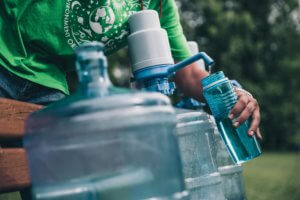Everything You Need to Know about Heat Stroke
Posted on: June 29, 2017Categories: LiveWell 24/7 With daily temperatures in the Carolinas averaging between 92-95 degrees in July, it is imperative to understand the stages of heat-related illnesses and take preventative measures to ensure that your health does not suffer from the heat!
With daily temperatures in the Carolinas averaging between 92-95 degrees in July, it is imperative to understand the stages of heat-related illnesses and take preventative measures to ensure that your health does not suffer from the heat!
What is Heat Stroke?
- Heat stroke is the most serious of four stages of heat-related illnesses. It is a medical emergency that usually occurs after the three previous stages: fainting, heat cramps, and heat exhaustion. This extreme heat-related illness occurs when your body can no longer cool itself, and core body temperatures reach 104 degrees Fahrenheit, leading to brain damage, organ failure and death. Heat stroke is a problem because many people do not realize they are in danger until it is too late; at the point when they have become sick, delirious, and confused due to nerve damage. In fact, research shows that 20% of patients who suffer from heat stroke have long term irreversible damage to their cognitive function.
Why does it occur?
- Heat stroke ensues from an increasing body temperature because of the body’s failed regulatory processes. As your body heats up, signals from the receptors in your skin travel to your brain, where responses such as sweating are initiated to cool the body down to 98.6 degrees. However, when your electrolytes become imbalanced or your body runs out of fluids to sweat out, these physiological systems begin to fail, so your core temperature cannot be regulated, and thus it begins to rise, causing permanent damage to your brain and other organs.
How Can I Prevent Heat Stroke?
- Recognize the symptoms: Timely recognition of heat-related illness symptoms are imperative to preventing long-term damage. Within an hour of onset of heat stroke symptoms, if caught and treated with cold water immersion and intravenous hydration, and if body temperature and brain function return to normal, the patient normally makes a full recovery. Be alert and know the common symptoms of heat stroke: body temperature above 103 degrees, rapid pulse, minimal sweating despite heat, fatigue, seizures, dark urine, confusion, unconsciousness, muscle cramps.
- Stay in contact with those most at-risk for Heat Stroke:
- People aged 65 years and older
- Infants and children
- Those with chronic medical conditions
- People without access to air conditioning
- People who work outdoors
- Athletes
- Take preventative measures at home:
- Drink plenty of water
- Eat hydrating foods
- Avoid sugary drinks, alcohol, and caffeine
- Avoid direct sunlight
- Stay in Air conditioned building
- Check your medications for increased risk of heat-related illness





